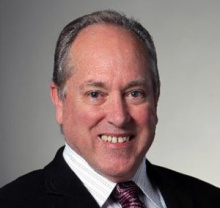Fundamental Physics of Moving Clock Time Synchronization in a Weak Gravitational Field
Fundamental Physics of Moving Clock Time Synchronization in a Weak Gravitational Field
Abstract
This talk will present the fundamental physics of near earth dynamic clocks and time synchronization. We begin by establishing basic clock behavior and reviewing established synchronization approaches between two stationary clocks in separated ground based laboratories. A discussion of different clock technologies that are in the literature will include comparisons of short term and long term stability including a relationship between stability and volume. Once clocks start moving in a gravitational field we must use General Relativity to understand the behavior of time as compared to other clocks that are either stationary or moving. We start with a one spatial and one time dimension to show how motion causes clocks to run at different rates and synchronization asymmetries that must be corrected. We then discuss the transformation of proper time to coordinate time just as done in GPS clocks. Then we’ll conclude by investigating the fundamentals of 4-dimensional dynamic clock synchronization of coordinate time.
Bio
Dr. Steven R. Wilkinson is a Principal Engineering Fellow on the Senior Technical Staff in RIS Engineering. Over his 24-year career at the company, he has mainly worked on development programs that involved new mission systems solutions that covered microwave and RF systems, electro-optical systems and is the company expert in time & frequency metrology. He has applied this expertise to position navigation and timing (PNT), communications, radar, and EO/IR sensing and imaging. He is currently the Principal Investigator on an effort that supports the National Radio Astronomy Observatory (NRAO) in two areas. Steven is the RIS planetary radar development technical lead, and is involved with the NRAO’s Next Generation Very Large Array (ngVLA) time and frequency effort. ngVLA is the future radio astronomy observatory that will replace the Very Large Array and the Very Long Baseline Array. Planetary radar will be a new capability for the NRAO and it will compliment current systems (Goldstone) to enhance our global planetary defense mission and solar system research. He received his undergraduate degree in physics from UC Berkeley and a PhD from the University of New Mexico.


